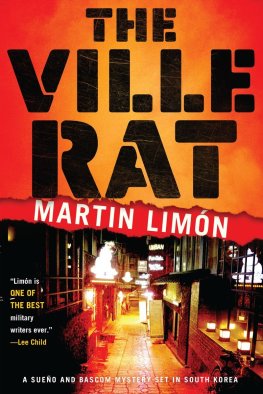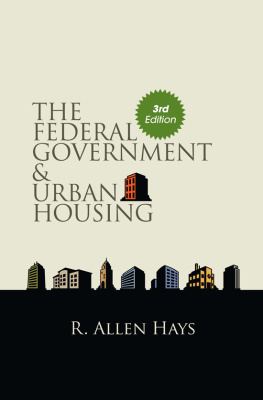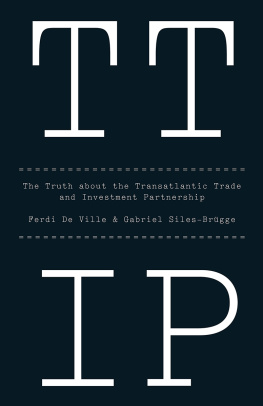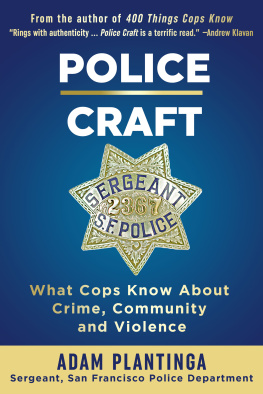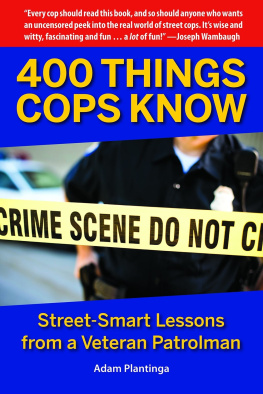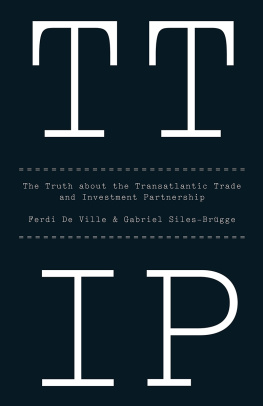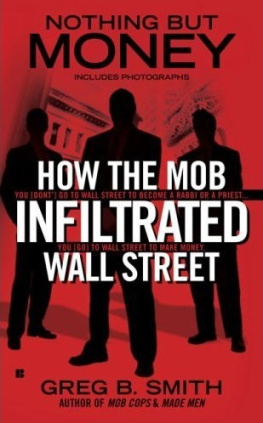Copyright 1993, 2015 Greg Donaldson
The Ville: Cops and Kids in Urban America was previously published by Ticknor & Fields, copyright 1993 Greg Donaldson
All rights reserved. No part of this publication may be reproduced, stored in a retrieval system, or transmitted in any form or by any meanselectronic, mechanical, photocopy, recording, or any otherexcept for brief quotations in printed reviews, without the prior permission of the publisher.
Fordham University Press has no responsibility for the persistence or accuracy of URLs for external or third-party Internet websites referred to in this publication and does not guarantee that any content on such websites is, or will remain, accurate or appropriate.
Fordham University Press also publishes its books in a variety of electronic formats. Some content that appears in print may not be available in electronic books.
Visit us online at www.fordhampress.com.
Library of Congress Control Number: 2014952821
Printed in the United States of America
17 16 15 5 4 3 2 1
Updated edition
FOREWORD
The re-publication of Greg Donaldsons The Ville by Fordham University Press is a great event for anyone interested in New York City history or the politics of drug enforcement. The Ville is, without question, the best book ever written about inner-city New York during the years of the crack epidemic. The Ville presents this tragedy from so many vantage pointsthose of the dealers, the police and prosecutors, the teachers and school principals, the families trying to raise children amidst the carnage, and the young people who, despite living in a danger zone, try to stay clear of a drug business that promised unprecedented rewards and even graver risks.
I can think of no other book that penetrates an inner-city neighborhood in New York in this era with such insight, such eloquence, and such respect and compassion for different groups of people trying to make a life in a world of limited opportunity rent by deadly violence. To put The Ville in perspective, I have to turn to media other than books. The only places I can find youth narratives of equal eloquence from the crack years in New York are in the hip-hop storytelling of JZ, Nas, Biggie Smalls, and Wu Tang Clan. The Ville is the perfect companion volume to three of the greatest hip-hop albums of all time, set in the housing projects of Brooklyn, Queens, and Staten Island: Nass Illmatic, JZs Reasonable Doubt, and Wu Tang Clans 36 Chambers. Donaldson captures the worldview of young people in a world shaped by crack almost as well as these amazing artistswhile also providing an equally compelling portrait of their major adversary, the police.
And here, to put The Ville in perspective, you have to turn to what many think is the greatest TV series ever made, The Wire. The Ville is The Wire in print form, ten years earlier, set in Brownsville, Brooklyn, rather than Baltimore, Maryland. Donaldson brings to life what it means to be a police officer in the drug war without either demonizing or romanticizing the police. You see the heroism, the cynicism, the racism, the careerism, the price officers pay in health and family life for being in such a high-risk profession. Humanizing both the police and the sellers at the peak of the drug war is extremely challenging, but Donaldson manages to do it. This makes The Ville a unique contribution to urban ethnography and investigative journalism the way The Wire was groundbreaking television drama.
To understand what Greg Donaldson was able to do in The Ville, as well as the risks he took in writing it, you have to know something about the neighborhood he portrayed, as well as the period in which he did the bulk of his research. Brownsville, Brooklyn, was the most dangerous single neighborhood in New York City at a timethe late 1980s to the early 1990swhen the annual homicide rate in New York City approached 2,000. The streets Donaldson walked, the housing projects he visited regularly, even the high school (Thomas Jefferson) he spent time in were free-fire zones where bullets could begin flying at any time. I worked with community groups in East New York during those years and would not take my Fordham students with me because I could not expose them to the risks. One group I worked with, United Community Centers of New York, started a campaign called Shield the Children after a drug dealer in the Cypress Houses pulled a three-year-old out of a stroller to use as a human shield during a gun battle. The group was also up in arms about an incident in a library on New Lots Avenue in which the entire staff was taken hostage by armed intruders, and about five murders that took place in a single year inside Thomas Jefferson High School.
This was the challenge Greg Donaldson faced when he decided to spend two years in Brownsville accompanying police on buy-and-bust operations, visiting families in the local projects, working with the theater program and basketball team at Thomas Jefferson High School, and spending hours and hours talking to young people one-on-one in their apartments, in school, on the subway, and on project benches. And the way he won their confidence was by exposing himself to the same risks they faced every day and night. And because he was willing to face those risks, because he was literally willing to die to write this book, he won the respect of people who almost never trust outsiders.
Willing to die may seem to some who have never spent time in Brownsville or a community like it to be a tired clich, but it was a powerful existential reality for those living amidst crack and povertys overpowering influence. It is no accident that Biggie Smalls, one of the greatest hip-hop narrators of the crack years, entitled his best-known album Ready to Die or that the two great educators whom Donaldson portrays in his book, teacher and theater director Sharon King and principal Carol Beck, both indicate that they are willing to put their lives on the line to protect their students and command the respect necessary to do their jobs. In Brownsville, as Donaldson shows, risking ones life was a daily occurrence, and no one working in that community, whether teacher, police officer, or, in Donaldsons case, investigative journalist, is going to get the time of day from residents unless they show they are willing to do that.
Donaldson passed that test with everyone. And so he could present Brownsville from the inside in a wide variety of settings, from picnics and barbecues to plays and basketball games, to shootouts and beefs, to bitter conflicts in stationhouses between racist police officers and those who respected the neighborhood and its people. And also because he was able to help folks out. As a former college basketball player with a background in theater, Donaldson was a valuable resource for teachers, coaches, and young people and was involved with mentoring and opening up opportunities for the young people he was writing about. Given this, The Ville does not claim to be an objective work of social science. It is written from the perspective of a participant in the life of the community, motivated by a deep compassion for its residents and a profound understanding of how they were scarred by racism and poverty. Never does Donaldson let us forget that the Brownsville story is intimately connected to the history of racism and race-based economic inequality in the United States, and that the suffering of its residents, and the suffering its residents impose on one another, is something for which we all bear responsibility.


